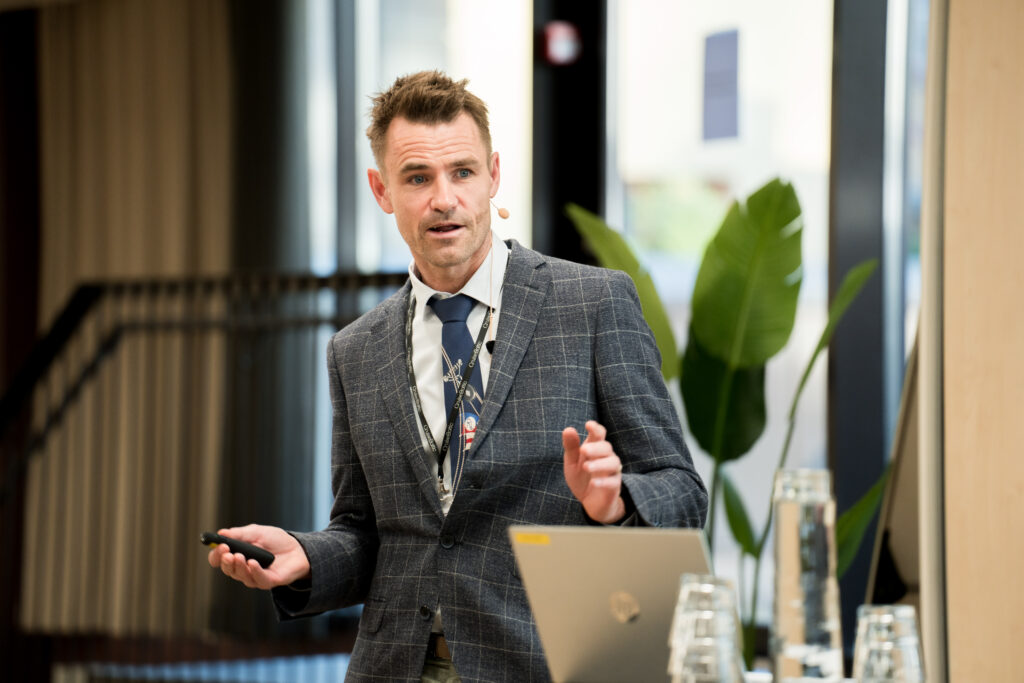
Ports play a major role in developing sustainable tourism
Shipping companies, ports and local travel destinations work closely together so that tourism can continuously develop in a more sustainable direction. The matter can be looked at from many angles.
Sustainability and responsibility in tourism are constant topics of conversation, and this was also the case at the Helsinki Cruise Baltic meeting in October in Helsinki, where representatives of shipping companies and ports gathered to discuss the development of cruise tourism in the Baltic Sea.
Shipowners and other industry players are struggling under the cross-pressure of investments and rapidly tightening regulation. The Baltic Sea is a special maritime area, where environmental regulation is strict and getting stricter at an accelerating pace.
Pressing issues include the switch to more environmentally friendly alternatives in fuels and the availability of onshore power in ports, so that ships’ diesel engines do not need to be run to keep the ship’s operations running in port.
“The tourism sector has been singled out with regard to responsibility issues and sustainability themes. However, I don’t think cruise lines have received enough recognition for all the things they have already done and are developing,” says Klaus Bondam, Cruise Baltic’s CEO.
Onshore power becomes mandatory
Bondam cites as examples the reduction of noise pollution, the provision of more responsible excursions and alternatives for tourists, such as public transport, cycling and walking.
50% of cruise ships in the Baltic Sea can receive shore power. In a few years’ time, this figure will rise to 70%. In the near future, onshore electricity will become mandatory and ports will not receive EU funding for new projects without it.
“Ports have a major role to play in recycling waste and converting it into renewable energy,” says Bondam.
According to Bondam, Cruise Baltic has been actively encouraging its members to collect and share data. This information makes it easier to continue development work.
Sustainability manifesto to support growing cruise tourism
Cruise tourism has grown globally over the past 20 years and is expected to grow to as many as 80 million tourists by 2040. This figure was 27 million in 2018, based on estimates of growing cruise ship charter volumes.
Shipowners signed the Sustainability Manifesto in 2019, with the goal of carbon neutrality by 2050. Some of the targets are more difficult to achieve and depend on countries’ political decisions, but shipowners are committed to the development work.
Investment is necessary, but increasing the number of tourists will require cooperation between destinations, ports, cruise lines and local authorities to increase responsible and sustainable development in the region.

“Helsinki has just been selected as the world’s most sustainable tourist destination in the international Global Destination Sustainability (GDS) index. Good results are achieved through joint efforts, and I think it is important that the sustainability of the tourism sector in Finland is developed with a long-term perspective and in cooperation between the different actors in the sector,” says Kaj Takolander, VP Passenger Business at the Port of Helsinki.
“Already in 2020, the Port of Helsinki was awarded the Sustainable Travel Finland label for sustainable tourism, which we are very proud of. Visit Finland’s criteria take into account economic, ecological, social and cultural sustainability,” Takolander adds.
Many perspectives to consider
Cruise operators plan their ships’ routes to make them as efficient as possible. New ships and their operations are designed to be more efficient so that they use less fuel.

“There is a lot of discussion in our industry about how we could move from LNG fuel to bio-LNG and from there to synthetic LNG. The problem is that there is no carbon-free fuel available. The biggest issue is the sufficiency of fuel to meet our needs,” says Jon Olav Stedje, MSC Cruises’ Director of Sustainability and Community Engagement.
Stedje, who took up his post in July, has a new title. On his LinkedIn profile, Stedje says: “The cruise industry plays a key role in the sustainable development of the tourism industry, and I strive to be part of this journey!”
Stedje gave a presentation at a gathering in Helsinki in October on how his employer sees the future and the move towards a more responsible tomorrow. The presentation is not allowed to be referenced, but it is clear that there are many solutions beyond fuel and geothermal electricity.
“We need to think about how local communities can benefit from our visit and what cruise passengers see of them is a true representation of the community,” says Stedje.
Cruise Baltic is an engaged facilitator and network connecting 32 partner ports and destinations in the Baltic Sea region in Northern Europe.
Its aim is to promote the partners and stimulate curiosity about Baltic cruise products among cruise lines, travel agents and anyone who wants to learn more about the opportunities in the region.
The network, which celebrates its 20th anniversary this year, offers its experience to cruise lines and facilitates their operations in the Baltic Sea to ensure that cruise passengers have an unforgettable experience and that everything runs seamlessly.
Cruise Baltic members are committed to common goals in developing the Baltic Sea cruise tourism as a more sustainable destination for the world.





